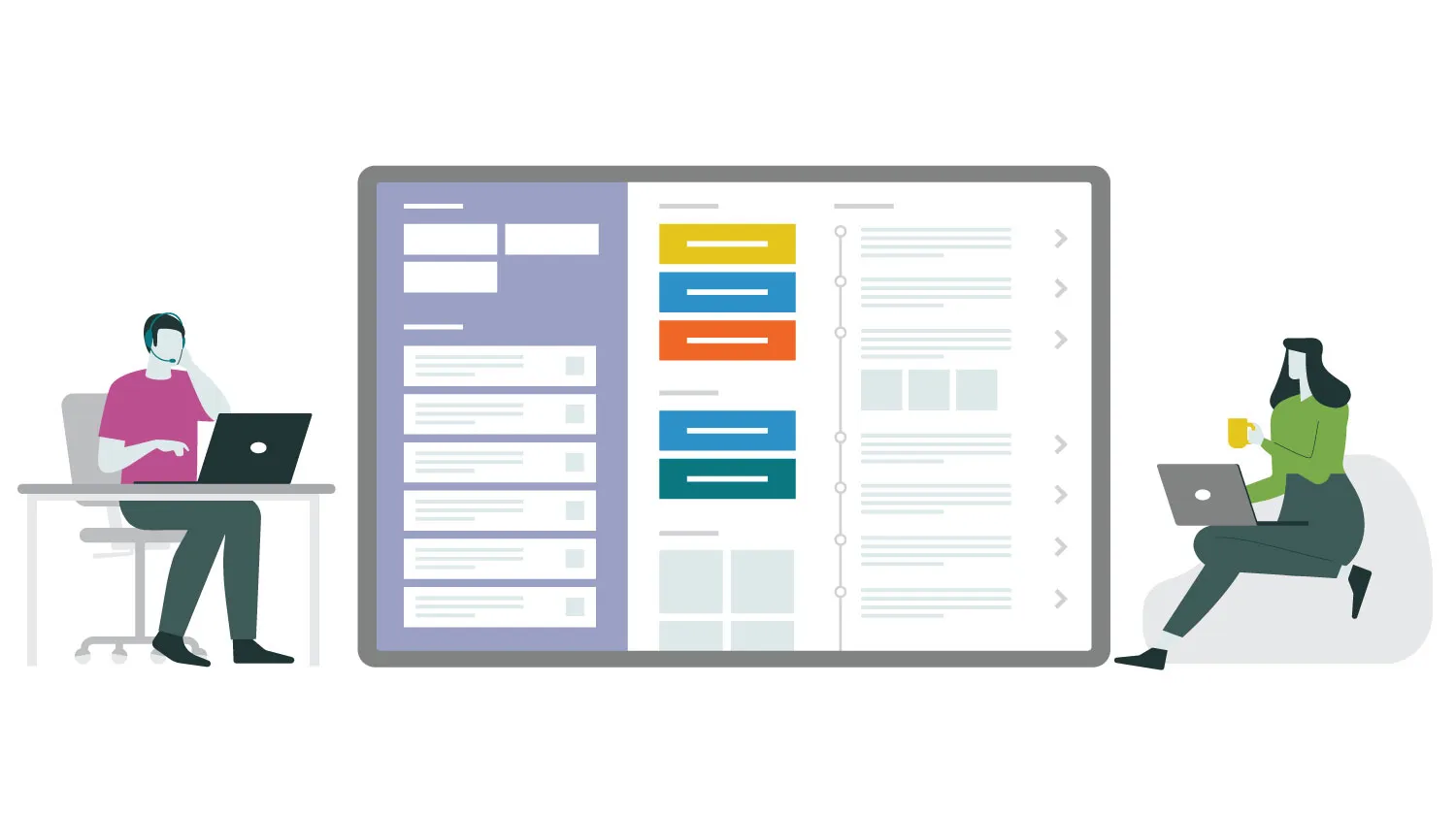May 8, 2020
Clienteling in retail: Best practices and examples
Driving value both online and offline comes down to one thing: Exceptional human-to-human experiences. Clienteling technology gives store managers and sales associates the ability to proactively engage with customers, strengthening their relationships and boosting their lifetime value.

In-store sales associates have the potential to offer an unrivaled customer experience.
The ability to interact on a one-to-one basis with another human being creates an emotional connection that often nurtures buyers into brand evangelists. Today’s consumers value exceptional service and experiences over exceptional products, and leading retailers understand that prioritizing personalized in-store experiences for their highest-value customers is the only way to win.
Those in-store interactions have always been limited by sales associates’ lack of access to customer data such as previous purchases and style preferences, however. By unifying siloed customer data and giving your sales associates access to complete customer profiles, you can offer focused, personalized, and human-to-human customer engagement wherever your customers prefer to shop.
Clienteling strategies can help your sales associates provide delightful digital experiences to your highest-value customers, strengthening their relationships with your brand and facilitating smooth online sales.
In this blog, we’ll discuss:
- What clienteling is and how it can help retailers strengthen customer relationships even during disruption
- Why prioritizing your highest-value customers for this human approach is critical to getting the most value
- Examples of what this proactive outreach and engagement should actually look like
- Key considerations for implementing clienteling and training your sales associates to do it well
What is retail clienteling and why is it important?
In a world where digital dominates, brands that offer superior and insight-driven customer experiences are the ones that ultimately succeed. By using customer data to understand how to capture (and keep) consumer attention, you can design informed and memorable experiences that lead to increased revenue for your brand.
Clienteling is the linchpin solution to help you do so, both online and offline. Powered by your existing customer data, retail clienteling software can help your sales associates access a detailed history of all omnichannel customer interactions and identify returning shoppers for targeted engagement online. Retailers need to be hyper-focused on identifying and engaging these shoppers to offset the drop in brick-and-mortar sales as ecommerce continues to rise in popularity.
Thriving in the ever-evolving retail market is about more than just offering consumers the ability to shop online; it’s about proactively driving engagement to preserve the relationship between your brand and your most loyal customers. Clienteling empowers sales associates to identify and communicate with high-value customers, provide tailored recommendations and suggestions for add-on products to boost order value, and satisfy customers by offering real-time support.
But the secret to successful clienteling lies in value-based customer segmentation.
Prioritizing your highest-value customers is key
By now, every retailer understands the importance of personalized, one-to-one customer experiences—but too many retailers waste money by trying to personalize every customer journey.
The truth is that not all customers provide equal value to your business. In fact, many brands find that the value distribution of their customer bases falls roughly into the Pareto Principle, also known as the 80:20 rule. This rule occurs when about 80 percent of a business’s overall revenue comes from only about 20 percent of its customers. After onboarding Spyder’s customer data into the Lexer Customer Data Platform (CDP), for example, we found that their customer value distribution followed this rule almost perfectly.
Therefore, you should not invest equally into personalization for every customer journey. Because only a small number of your customers provide a high lifetime value to your business, you should focus on servicing these customers with proactive, one-to-one human outreach and engagement.
Plus, this high-value 20 percent of your customers will be easier to manage than the entire customer base, enabling your sales associates to provide an optimal experience.
Retail clienteling: Best practices and examples
The opportunities to proactively engage with your customers are limitless. Here are some examples of starter outreach messages that one of your at-home store associates could send to a high-value customer:
- “We’re sending you a little something just to say thanks…”
- “These would go great with the other products you bought…”
- “Take a look at this new category we’ve launched…”
- “Here’s a quick sneak peek before we release this product to everyone else…”
- “Would you like us to auto-send you this product every month?”
- “Here’s a little promo for your friends and family…”
- “How did we do?”
- “We’d love to get to know you better…”
- “Did you know you could do this with your product…?”
- “Here’s some expert advice on how best to care for your product…”
- “Your product is due for scheduled maintenance—speak to these guys…”
- “Why not buy this online rather than travel to a store…”
You’ll notice that each of these messages is positioned to add value and special care to the recipient. By offering a service or product for free, providing access to exclusive content, demonstrating a commitment to customer satisfaction, and asking thoughtful questions to learn more about the customer, you’re essentially letting the customer know that you understand them and want to do what you can to help make their lives better.
When these messages are delivered by a human sales associate, they’re more likely to resonate. Genuine, human experiences are memorable, and they help boost customer loyalty to your brand.
6 key considerations for clienteling training, implementation, and optimization
Successful clienteling takes customer insight, planning, and efficient processes. Here are 6 key considerations you need to think over before implementing at-home clienteling for your customers.
1. Resourcing
The first question you need to ask yourself before implementing proactive outreach and engagement is: Who’s going to do it?
Team members from retail, customer service, and marketing can all effectively perform clienteling with the right tools and information—but with your in-store staff at home during the COVID-19 lockdown, they make great candidates for leading the process right now.
Additionally, you need to make sure that your staff has access to the right tools. A CDP-powered clienteling solution like Lexer makes the best candidate for this kind of at-home engagement because it’s user-friendly enough that it requires minimal training and it democratizes access to all customer data and insight. That means that your sales associates won’t be flying blind; they’ll be empowered to provide relevant experiences and recommendations tailored to the individual.
2. Targeting
Secondly, you need to figure out which customers you will engage and why.
As mentioned previously, prioritizing your highest-value customers usually makes the most sense—but how do you identify and segment these high-value customers in the first place?
A CDP can help you identify your high-value customers, segment them by local stores and catchments, and gain granular insights on these customers to inform your personalization strategy. By first pulling targeted segments and then assigning them to data-driven retail teams and individuals, you can ensure that your staff’s outreach is controlled, focused, and impactful.
3. Outreach
First impressions matter.
The first contact you make with your customers will be pivotal to the ultimate value you gain from that engagement, so it’s important that you make that first contact in an efficient and brand-safe manner.
The easiest way to do this is with a CDP tool that enables you to select an individual customer and email them a templated message directly from the platform. By templating the messages for targeted segments and personalizing them to the individual within the platform, you can ensure consistency, quality, and efficiency across the board.
4. Follow-Up
No matter what kind of message you send in your initial outreach—be it a discounted offer, a product suggestion, a survey, or else—you need a timely and relevant follow-up. Follow-ups give customers another chance to be heard, to choose whether or not to engage or to provide feedback that you can use to optimize future communications.
By managing your follow-up and ongoing engagement within a CDP, you can ensure that all relevant customer information is stored in the same place. Customer notes and data from these conversations can be accessed by any sales associate, customer service representative, or marketer to inform their interactions.
5. Reporting
As with most business strategies, you need to close the loop between your day-to-day activities and the end-result they’re driving with accurate reporting.
Before you begin proactive outreach and engagement, make sure that you understand exactly how you’ll measure the impact of these activities and the performance of individual sales associates. You may want to measure things like:
- The number of messages sent and replies received.
- Response times and wait times.
- Counts of customers contacted by team members.
- Average number of customer interactions.
- NPS scores.
KPIs like these will help you understand the efficiency and effectiveness of your outreach, enabling you to double-down on what’s working and pinpoint areas of improvement. Click here to learn more about measuring your impact with a CDP.
6. Optimization
As you measure and report on the engagement metrics listed above, compare them against shifts in things like lifetime value, recency of purchases, total orders, average order value, and sales transaction channels. This data will help you identify opportunities for change and optimize your process to drive exponential levels of impact as time goes on.
And the best part? If you start clienteling now, you’ll be able to begin optimizing your process so it’s ready to make the greatest impact when stores begin to open again.
Empower your sales associates to boost customer lifetime value with retail clienteling tools
Retail was always a fast-evolving industry, but its current speed of change is unprecedented. Businesses have been forced to increase their reliance on digital sales channels, consumers have begun to prioritize different types of purchases, and genuine, personalized experiences are more important than ever.
A CDP-powered clienteling solution provides your business with a more holistic understanding of customer purchases, preferences, and behaviors—even if they’ve never shopped online before. Using this insight, your sales associates can achieve more personalized engagement, provide better recommendations and customer service, and ultimately capture more sales.
Lexer’s tools and strategic guidance enable retailers to proactively engage with customers in an informed and manageable way. For more information on CDP-powered clienteling, book a meeting with a member of our team using the calendar link below.
Speak with our retail experts

